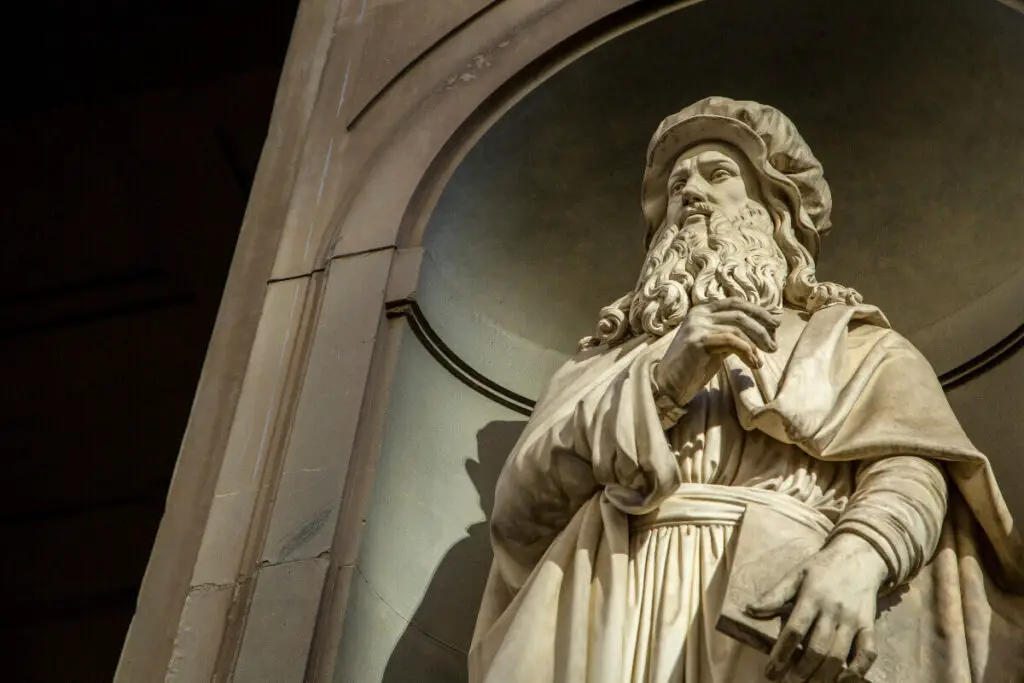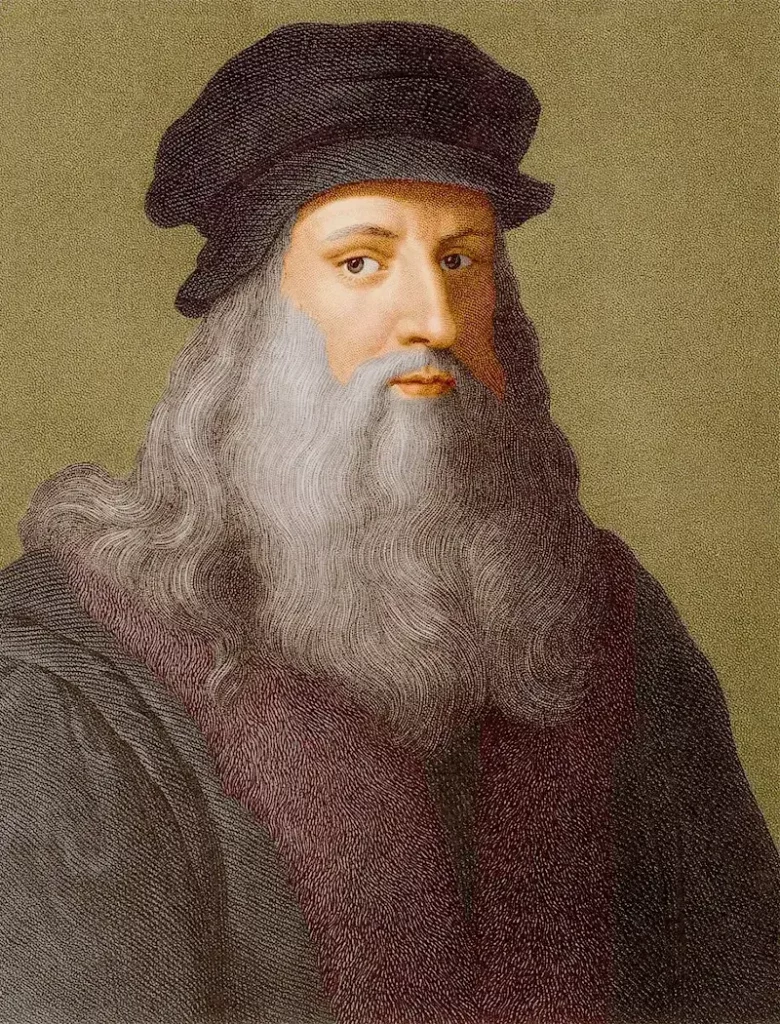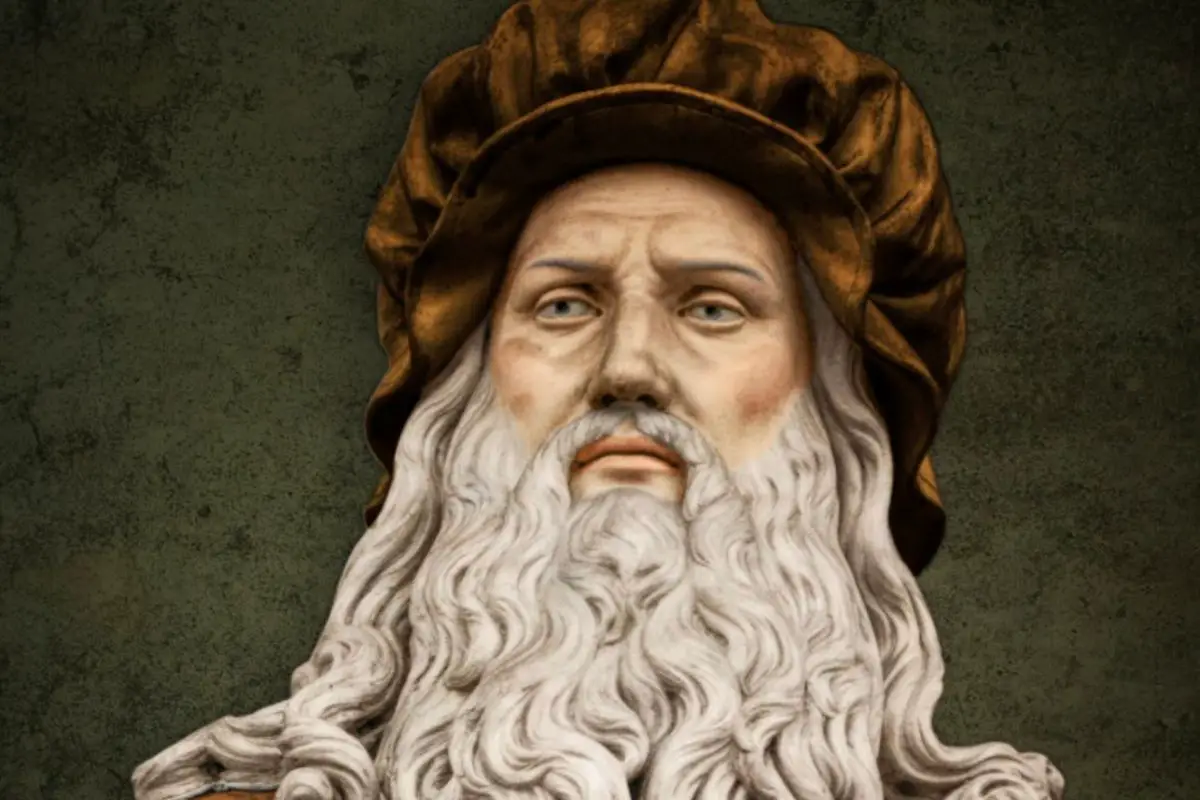The vast tapestry of human achievement seldom fabricates a figure as uniquely enigmatic and persistently captivating as Leonardo da Vinci. Born on April 15, 1452, in the depths of the Renaissance era, his life and artistic journey remain timeless testaments to the limitless bounds of human ingenuity.
An archetypal polymath who effortlessly traversed the worlds of art, science, and inventions, Leonardo da Vinci’s quantum leaps of creativity continue to challenge the corners of our perception even in the modern era. Through an enlightening discourse into his early life, artistic evolution, technological endeavors, and the lasting impact of his inter-disciplinary genius, we strive to appreciate and understand the symbiotic relationship between his artistic brilliance and inventive prowess and how they revolutionized our understanding of this Renaissance master.
Table of Contents
- Da Vinci’s Life and Artistic Journey
- Inventions and technological contributions
- Impact on Art and Science: An Everlasting Legacy
- Related Questions
Da Vinci’s Life and Artistic Journey
In the constellation of outstanding historical figures, Leonardo da Vinci shines as one of the brightest stars. A pioneering spirit who shaped the course of art, science, and invention, da Vinci’s significance transcends his epoch and inspires generations.
Some people remember him as an exceptional artist, others as a revolutionary inventor, but an in-depth analysis reveals a brilliant mind where artistry and inventiveness coexisted and complemented each other. This intricate balance shaped him as an inventor and revolutionized the whole framework of Renaissance thought and beyond.
Beginnings of a polymath, the intersection of arts and science
Born in Vinci, Italy, in 1452, Leonardo developed a profound attraction towards art, science, and nature at an early age. His artistic journey began under the guidance of the eminent artist and engineer Verrocchio.
Here, he ventured past the boundaries of traditional methods and began his exploration of diverse fields. This interdisciplinary approach planted the seeds of an inventor in da Vinci, nurturing the curiosity that propelled him to deconstruct and decipher the mysteries of the world around him.
At this juncture, it is crucial to understand that Leonardo’s art and inventions weren’t separate entities; instead, they amalgamated, one shaping the other, forging a creative synergy.
His exhaustive nature studies formed the bedrock for his De Pictura (On Painting), where he avowed that art should represent the governing principles of nature. This pivot from the dogmatic to an empirical approach was his first significant step towards becoming an innovative force.
Marvels from experimentation: da Vinci as an inventor
Da Vinci’s artworks, such as the Last Supper and Mona Lisa, testify to his commitment to imitating the subtleties of nature, thereby harnessing the techniques of perspective, sfumato, and chiaroscuro.
Through these techniques, he strived to recreate the complexity and dynamics of life. His pursuit for perfection, driven by his artist persona, fueled unprecedented experimentation that culminated in numerous machines and mechanical designs.
Anatomy, for instance, was a subject that da Vinci had a deep fascination for. He dissected over 30 human corpses, studying every minute detail with an artist’s sensitivity and translating it into thousands of anatomical sketches. These anatomical explorations yielded cutting-edge insights and laid the foundation for inventions like the crank mechanism and the ‘ideal city’ design.
His forays into the intricate fluidity and dynamism of water embodied brilliantly in his paintings also led to some of his most revolutionary creative outputs, namely the conception of devices like the hydraulic pump and waterwheel and the idea for a scuba apparatus.
Groundbreaking leaps into the future
Beyond the realm of invention, the synchronization between art and science in da Vinci’s work provided a template that other Renaissance polymaths and future generations of inventors would follow. His codices brim with futuristic ideas – hang gliders, helicopters, armored vehicles – that seem to leap out of the pages of modern engineering textbooks.
Therefore, Da Vinci’s artistic journey was not an isolated expedition but one that cross-pollinated with his scientific ventures, shaping his evolution as an inventor. His life and work illuminate the magnitude of his genius, boldly proclaiming that artistic thinking when entwined with scientific methods, can create an epoch of revolutionary ideas and inventions.
As da Vinci’s legacy endures, it invites contemporary society to redefine its perspective on education and creativity, situating the arts as central to scientific and inventive thought.

Inventions and technological contributions
Leonardo da Vinci: Visionary Inventor and Pioneering Technologist
Just as Leonardo da Vinci’s contributions to fields of art and science are recognized, it is unquestionable that his inventions hold great significance in our understanding and perception of technology.
Delving deep into the pages of da Vinci’s notebooks, one unearths a plethora of inventions, many of which were far ahead of his time, piercing the veil of future possibilities. His gifts weren’t limited to painted canvases; they extended to the canvas of the technological world, setting an innovative precedence that continues to inspire modern invention.
One of da Vinci’s most significant inventions lies in his flying machine concept. Though never actualized by da Vinci, his detailed sketches reveal a thorough understanding of flight mechanics, predating modern aviation by several centuries.
His ‘ornithopter’ was designed with wings that mimicked the structure and motion of a bird’s, thereby illuminating da Vinci’s belief in bio-inspired design even before the discipline was established.
Equally remarkable is the self-propelled cart, often recognized as the precursor to the modern automobile. Although it was designed without an engine, the ingenuity of this invention represented a new era of mechanized transport, showing da Vinci’s deep exploration into the potential of automation. It was a creation way ahead of its time, revealing a mind that dared to envision what was unseen.
In military technology, Leonardo da Vinci left significant footprints with the invention of the monumental crossbow. A weapon of intimidating size, it was cleverly designed to deliver destructive payloads across significant distances, thus altering the dynamics of warfare during his time.
Yet another remarkable aspect of Leonardo’s inventive prowess can be seen in his design of a scuba gear-like device. This invention allowed for underwater exploration and can thus be seen as a prophetic exhibition of what would evolve into modern diving equipment. Fostering a deeper understanding and respect for the unchartered territories below water surfaces, this invention further highlighted da Vinci’s profound connection with nature.
Given da Vinci’s out-of-the-box thinking and imaginative design skills, it’s clear why he is referred to as the father of Renaissance technology. By integrating aspects of art and science seamlessly, da Vinci allowed us to appreciate the elegant aesthetics of his creations and their practical implications in propelling technological advancements.
Da Vinci’s inventions, a remarkable testament to his genius, demonstrated the power of curiosity-driven exploration coupled with creative interpretation. His work influenced not only his peers and disciples but also successive generations of scientists, engineers, and creators, uplifting our collective perception of technology.
Undoubtedly, Leonardo da Vinci, through his unique interdisciplinary approach, continues to serve as an inexhaustible source of inspiration.
His enduring legacy within technology exemplifies invention’s true essence, urging us to dwell not on existing facts but to question, explore, and innovate ceaselessly.
As we navigate an era where the boundaries between art, science, and technology are increasingly blurred – the spirit of da Vinci’s technological prowess echoes louder than ever.

Impact on Art and Science: An Everlasting Legacy
Da Vinci’s relentless curiosity and ability to unify art and scientific principles led to pioneering inventions that not only enchant and intrigue art enthusiasts, connoisseurs, and scholars but continue to goad the understanding of modern-day engineers, architects, and scientists alike.
His inventive genius is crystallized in many devices, such as the flying machine, self-propelled cart, crossbow, and the scuba gear-like device, which stand as groundbreaking points of departure into modern technological wonders.
Da Vinci’s flying machine, which bore the semblance of a colossal batlike bird, perceivably foretold the advent of aviation almost four centuries ahead of the Wright brothers’ iconic flight.
It mirrored da Vinci’s exquisite understanding of aerodynamics and bore witness to his unremitting endeavors to mirror the flight of birds through ingenious mechanics. These designs have unquestionably laid the groundwork, inspiring today’s engineers as they soar into aviation technologies and aerospace wonders.
Meanwhile, the self-propelled cart that da Vinci conceived stood as a precursor for the future of mechanized transport. Drawing from principles of potential energy and directional movements, da Vinci envisioned a vehicle that could move without applying force.
As outlandish as it seemed in a fifteenth-century world, it nonetheless was civilization’s first glimpse into the possibilities of autonomous vehicles, a concept capturing the fascination of the contemporary world.
Similarly, da Vinci re-imagined warfare utilization with the design of the crossbow. Much more significant and more lethal than any other weapon of his time, its design demonstrated a deep understanding of tension, potential energy, and mechanics. This monstrous weapon not only influenced warfare strategy during da Vinci’s era but also spotlighted the feasibility of mechanized weapons, thus shaping future military technology.
Da Vinci’s scuba gear-like device, featuring a cane tube for breathing and a leather diving suit, was potentially conceived for warfare and exploration. It drew parallels to modern diving equipment, reflecting da Vinci’s forward-thinking approach to utilizing scientific principles for devising practical solutions, which contemporary inventors still embrace.
The magic of da Vinci’s genius lay in his unique inventions and his seamless integration of art and science. Each sketch, be it of a flying machine, a crossbow, or a scuba gear-like device, was rendered with an artist’s finesse while harboring a scientist’s precision.
Da Vinci’s influence resonates deeply among modern artists, scientists, engineers, and creators worldwide. His inventive approach and visionary designs serve as a beacon, driving modern innovators to blend aesthetics with functionality.
Today’s scientific visualization, product design, and technology-driven artistry find roots in da Vinci’s method of fusing artistic values with scientific thinking.
Indeed, Leonardo da Vinci’s legacy is a testament to the infinite possibilities that intertwining art and science can yield. His interdisciplinary approach to understanding and interpreting the world around him has shaped our world, inspiring us to push the boundaries of technology, art, and innovation.
In today’s era, where STEAM education emphasizes an integrative approach, the wave of inspiration from da Vinci’s approach intensifies, underscoring once more the enduring impact of his genius.

Permeating through the ages, da Vinci’s innovative spirit enriched not just the field of Art and Science during the Renaissance but continues to influence and inspire in the present context.
The synthesis of artistry and scientific thinking that da Vinci demonstrated profoundly illuminates the intrinsically linked nature of these disciplines, raising probing questions about the categorization and arbitrary divides between them.
Existing not merely as a historical figure but as a timeless beacon of endless curiosity and rigorous inquiry, his contribution transcends the conventional boundaries of time and discipline.
As we delve deeper into the intersections of creativity and technology in our modern world, we find ourselves continually returning to the figure of Leonardo da Vinci, demonstrating the enduring resonance and impact his ideas continue to have in shaping our collective imagination and comprehension of the world.
When you read many of his words, you can see how important it was for him to continue learning and gaining wisdom in life; this thirst and study of wisdom helps ensure the word philosopher is added to his legacy.
Anita Louise Art is dedicated to art education, great artists, and inspiring others to find and create their art. We love art that uplifts and inspires. #ArtToMakeYouSmile! #ArtToMakeYouHappy!
If you want to see any of my art, you can find out more by clicking here. If you are interested in what inspires me and my paintings, you can discover more by clicking here.
We have a free newsletter and would love you to be part of our community; you can subscribe to the newsletter by clicking here. If you have any questions, I would be happy to talk to you anytime. You can reach me, Anita, by clicking here.
Subscribe to our Anita Louise Art YouTube Channel with great videos and information by clicking here.
Join us for our podcast “5 Minutes With Art.” just 5 minutes a week with us to discover and learn about great art and artists. You can find out more about our podcast by clicking here.
Related Questions
What Inspired Leonardo da Vinci To Paint The Last Supper?
Duke Ludovico Sforza commissioned Leonardo to paint the Last Supper mural. What makes the Last Supper mural so unique is that he painted it at the exact time when Christ told the Apostles during The Last Supper meal that one of them would betray him. Leonardo showed the apostles’ reactions, including Judas, who betrayed Christ.
By clicking here, you can learn more by reading What Inspired Leonardo da Vinci To Paint The Last Supper?
What Did Leonardo da Vinci Contribute To Medicine?
Leonardo da Vinci contributed a lot to the medical field of study. His work contributed to our understanding of anatomy, medical physics, biomedical engineers, and neuroscience. He was fascinated with the human body as an artist and scientist.
By clicking here, you can learn more by reading What Did Leonardo da Vinci Contribute To Medicine?
How Was Leonardo da Vinci Able To Master So Many Different Professions?
Leonardo da Vinci is a man known to have had many different titles and professions during his lifetime. He was able to master this profession because he was a genius. But more than just being a genius, Leonardo is also self-educating and never stops learning. He had an insatiable amount of curiosity about all kinds of subjects.
By clicking here, you can learn more by reading How Was Leonardo da Vinci Able To Master So Many Different Professions?

